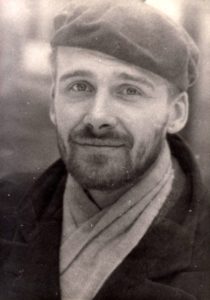Newly added DRAWINGS section, note “about virtuosity” in Reviews and further continuation of forgery analysis.
Andrej Bělocvětov attended a Russian grammar school in Prague, where he met Grigory Musatov , at the same time studied private painting with Nejezchleb ‘s pupil Nikolai Bakulin and in 1938-40 at the graphic school in Prague with prof. J. Solar and also G. Musatov.
In 1941, he met the photographer Josef Sudek , with whom he then had a lifelong friendship. Sudek was also a leading collector of Bělocvětov’s paintings. In addition to Sudek, the young artist was also admired by the painter Jan Zrzavý and the sculptor Karel Lidický . On their recommendation, Bělocvětov took part in the exhibitions of the Umělecká beseda every year in the years 1942-48 .During the war, he came into contact with a circle of Spořilov surrealists and in May 1945 he joined the Prague uprising. Immediately after the war, he was admitted to the Academy of Fine Arts without examinations and became a pupil of Vlastimil Rada and Emil Minář , but after a year he left it himself, because he found out that the academy was no longer a benefit for his further artistic development.
In 1949 he met Stanislava Pavlíková and the following year a daughter Andrea (Gradiva) was born. Even before the war, Bělocvětov and his mother refused to opt for the Argentine fascist regime, so they were deprived of Argentine citizenship – they survived the war with the so-called Nansen’s passport. After the war, Bělocvětov repeatedly and in vain tried to obtain Czechoslovak citizenship. Not only did the authorities refuse him this request, but later, as foreigners, they refused to give him permission to marry (he and Stanislav obtained this permission many years later). In 1952, he acquired a studio in a house adjacent to Hana Wichterlová’s studio . Across the street was Josef Sudek’s studio, where Bělocvětov often visited Sudek’s musical Tuesdays.
At the end of the 1950s, he became a member of the May 57 group and exhibited with it until 1965. In the 1970s, he was the honorary chairman of the Žižkov Avant-Garde. Due to his civic and artistic attitudes, especially his reluctance to compromise, he found himself in isolation and was not allowed to exhibit independently. Although the theme of death occurs throughout the painter’s work, his paintings have been characterized by an extraordinary degree of vitality in the last years of his life (throughout the 1990s). He died at a time when his work was beginning to be appreciated.
The links on this page point to Wikipedia, the other links on this WEB link and complement the individual comments.
